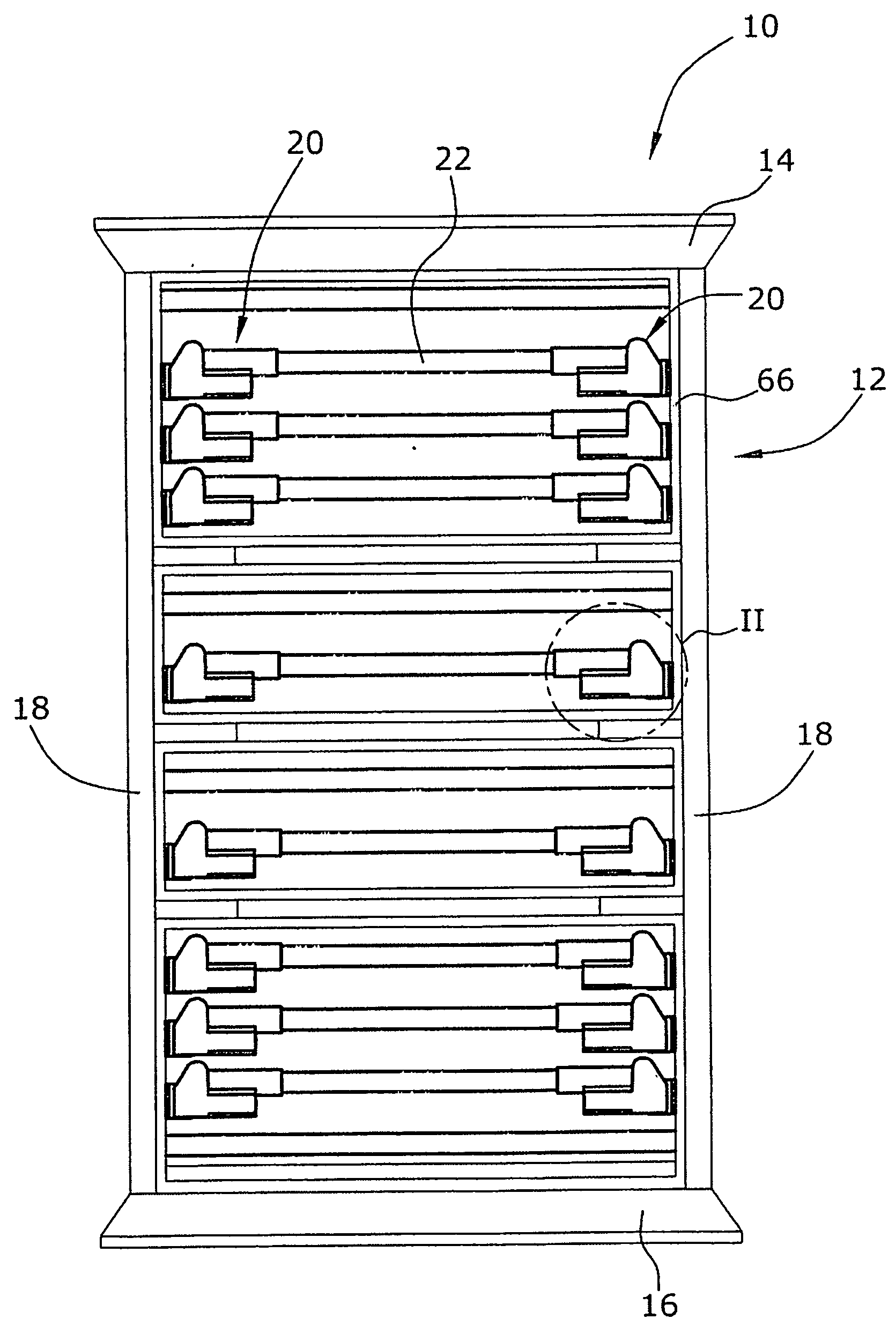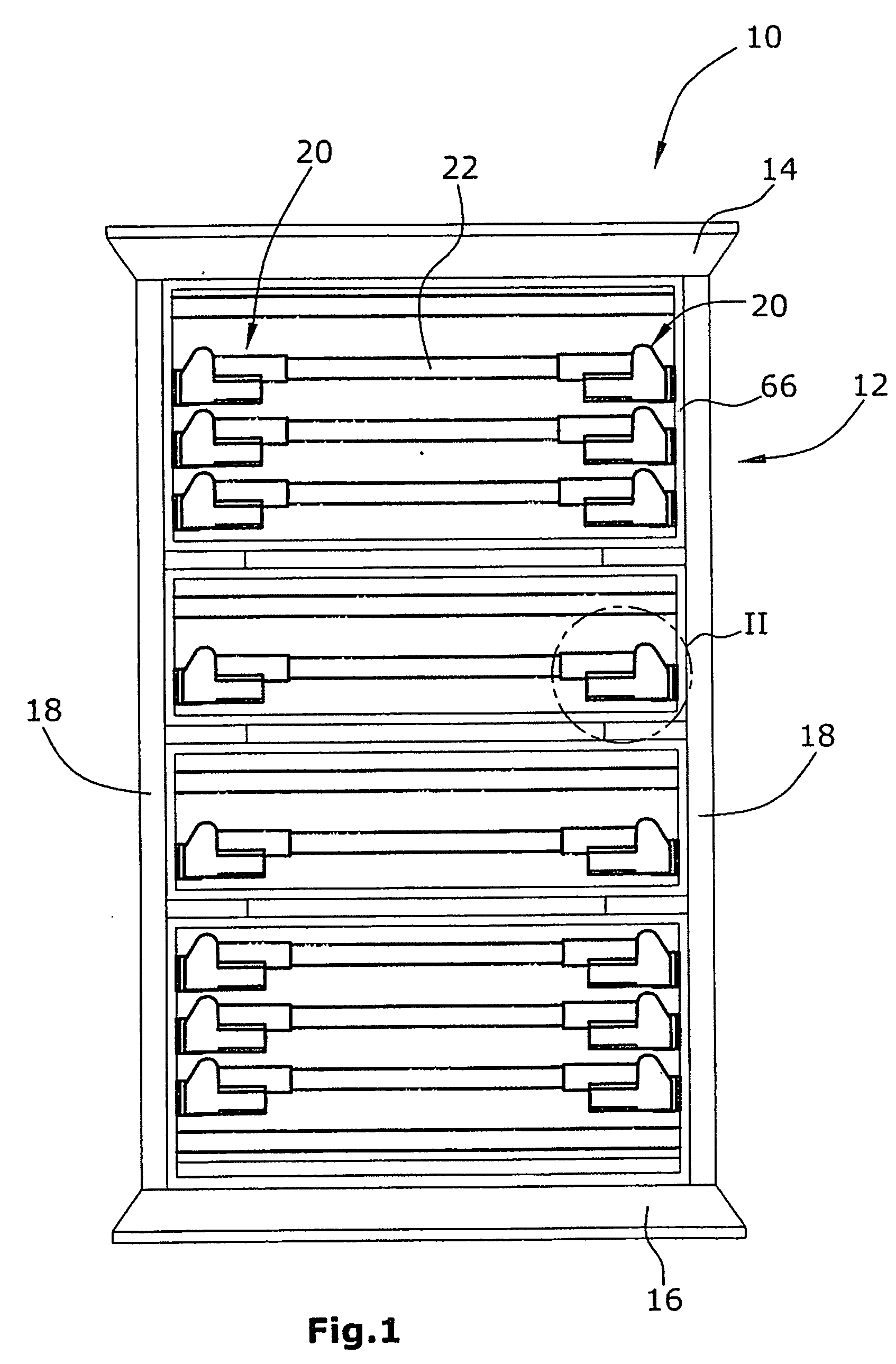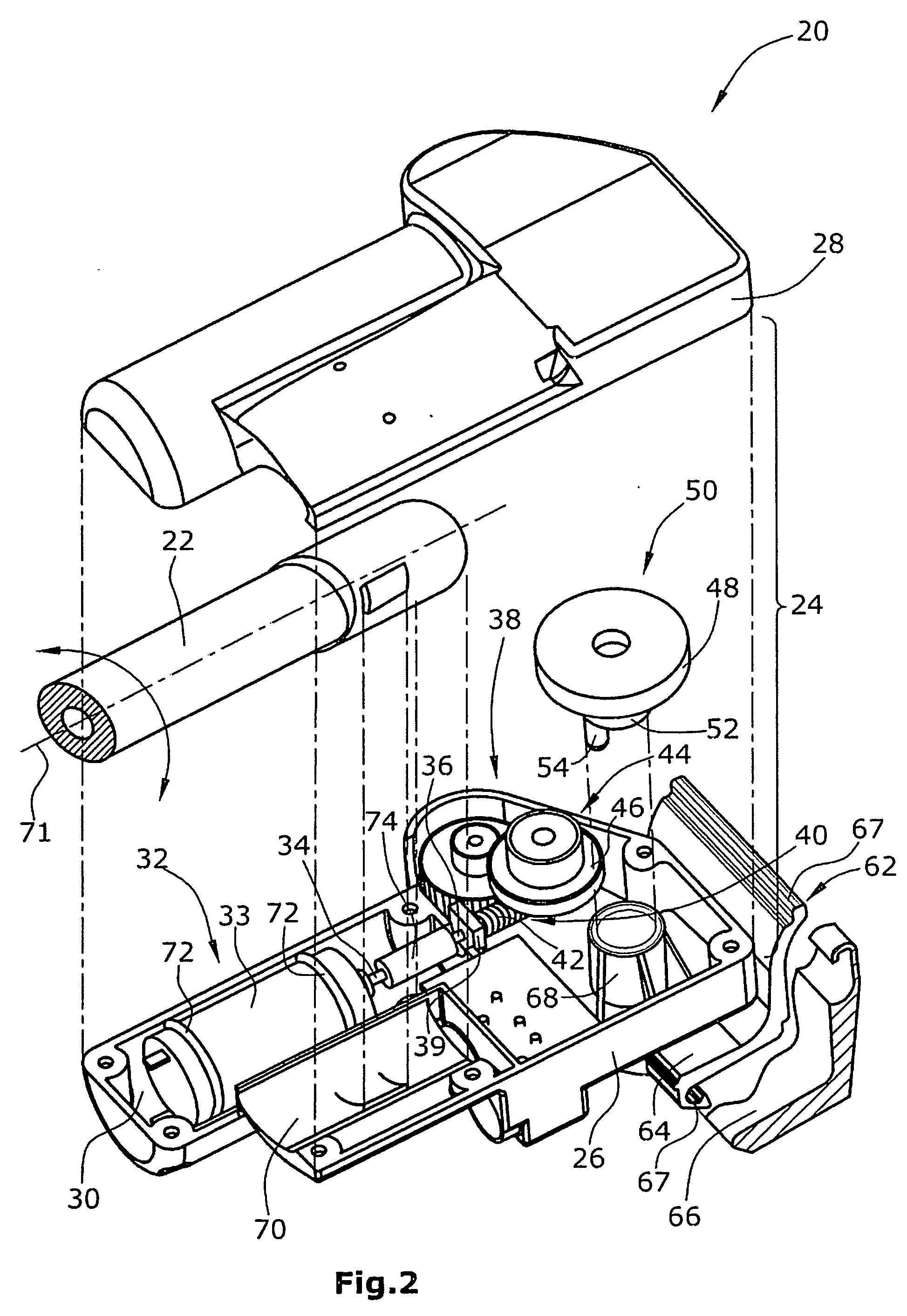[0007] It is an object of the present invention to provide a lying surface for a bed, especially a healthcare and / or
hospital bed, wherein the lifting units for lifting and lowering at least some of the support elements of the lying surface generate as little
noise as possible that advantageously is below the level of normal ambient noise.
[0016] As provided by the invention, the up and down movement of the lifting member or by the lifting member, respectively, is effected through a rotary movement of 360°. Thus, the rotary movement of the lifting member is not inverted for the lifting or lowering movement. The
drive motor always rotates in one and the same sense of rotation, whereby it is avoided to repeatedly
brake the motor and accelerate it again in the opposite sense of rotation to perform both movements of the lifting member. This in turn reduces noise since the development or generation of noise caused by braking and accelerating the motor can be avoided. Moving the support element(s) of the lying surface up and down may be realized in various different ways. With a view to driving the electromotor, it is somewhat complex to make the lifting member move in opposite directions to perform the lifting and lowering movement. In this respect it is advantageous if the lifting member performs both movements while the
drive shaft of the electromotor always rotates in the same sense of rotation. This means in turn that the lifting member is configured as a part of a
crank drive or as an element controlled by a slotted link or a
cam track. To perform a lifting movement, a
crank drive requires substantial force transmission in at least two rotational positions of the
crank. In view of this, a rotatory element with a
cam track control seems suitable as a lifting member. The rotatable lifting member is provided with a radially or axially projecting
cam adapted to be moved under control in a slotted link or along a cam track as the lifting member rotates. A configuration of a rotationally driven lifting member with cam track control results in one lifting and lowering movement through a 360° rotation. For the electromotor to carry out the necessary
stroke with the required force at minimum power, which, in first approximation, results in not too much noise being generated by the motor, it is suitable that the lifting member performs the lifting movement through as large a rotational angle range as possible. Thus, it is suitable in this respect if the upward movement is carried out through more than 180° of the rotary movement of the lifting member and, in particular, is carried out through 270° or more than 270°. It is not disadvantageous for the downward movement of the lifting member or the support element, respectively, if it is carried out through a substantially smaller rotational angle range compared to the upward movement, which, for example, covers only 90° in the latter case mentioned above.
[0017] Instead of a cam, a cam track controlled lifting member may also have a beveled front end abutting a counter bevel surface beveled under the same angle. When the lifting member thus configured is rotated about a
rotational axis extending through the front end side with respect to the (stationary) counter bevel surface, the two bevel surfaces alternately move apart and towards each other. Here, the beveled front end side of the lifting member performs a tumbling movement. To reduce wear on the contacting beveled surfaces, it is advantageous to rotatably support a
ring element either at the front end side of the lifting element or at the counter bevel surface, the
ring element being in contact with the opposite bevel surface. This
ring element is supported for rotation about a
rotational axis extending vertically to the bevel surface at which the ring element is provided. Thus, the ring element rolls on the bevel surface opposite thereto when both are rotated relative to each other. Preferably, the rotatable support of the ring element is obtained by a
roller bearing. The rolling movement occurring in the lifting member is relatively noise-free which has an advantageous effect on the overall
noise generation of the lifting unit.
[0018] In an advantageous development of the invention, it is further provided that the lifting member comprises a disc element oriented under an
acute angle with the
rotational axis of the lifting member and supported at a counter bevel of the lifting member, the disc element and the counter bevel being oriented under the same
acute angle with the rotational axis of the lifting member. In this embodiment of the lifting member, the same has a shaft divided along a plane oblique to the longitudinal axis of the shaft. One part of the lifting member shaft is stationary, whereas the other part of the haft may be rotated about its longitudinal axis. Thus, the rotatable part of the shaft moves away from the stationary part of the shaft during its rotation through 360° (through the first partial rotation in the range between 180° and 270°) to then move back towards the stationary shaft (during the second half of the rotation). In doing so, the bevel surface of the rotatable shaft part rolls on the bevel surface of the stationary shaft part. In order to avoid wear or to reduce friction, this can be improved by providing the disc element with a rotatably supported outer ring element that, when the disc element is rotated, rolls on the counter bevel relative thereto.
[0019] To influence the rotational angle range through which the rotatable shaft part moves away from the stationary shaft part, it is advantageous to arrange the disc element eccentrically with respect to the rotational axis of the rotating shaft part. The disc element with its rotatably supported outer ring element may be supported both at the stationary shaft part and the rotatable shaft part. This always has the same effect on the cinematic of the lifting member. The rotatable support of the outer ring element, which is supported at the opposite bevel surface and rolls thereon, is also advantageous in reducing noise.
[0026] Another contribution to the reduction of noise is achieved by a corresponding selection of the materials of the individual components that move on each other or mesh with each other. Possible material combinations are PA, POM, steel and
brass. This is true, for example, for the materials moving on each other in a cam track controlled embodiment of the lifting member. Further, it is advantageous to configure the housing such that it cannot act as a resonant body. In this respect, one requirement is a small volume within the housing. In other words, the housing should enclose the electromotor, the transmission, and possible other elements, such as electronic controls or the like, as closely as possible. For structural reasons, a non-reverberant configuration of the housing can be realized that reduces the transmission of sound to the outside.
 Login to View More
Login to View More  Login to View More
Login to View More 


